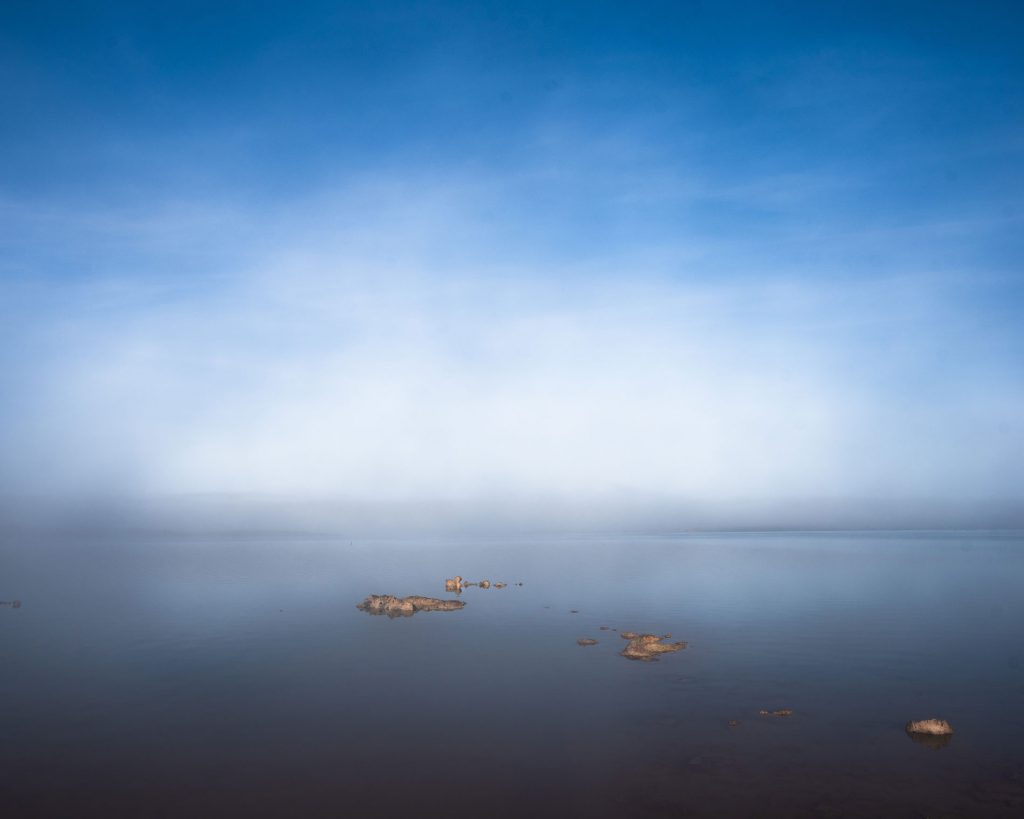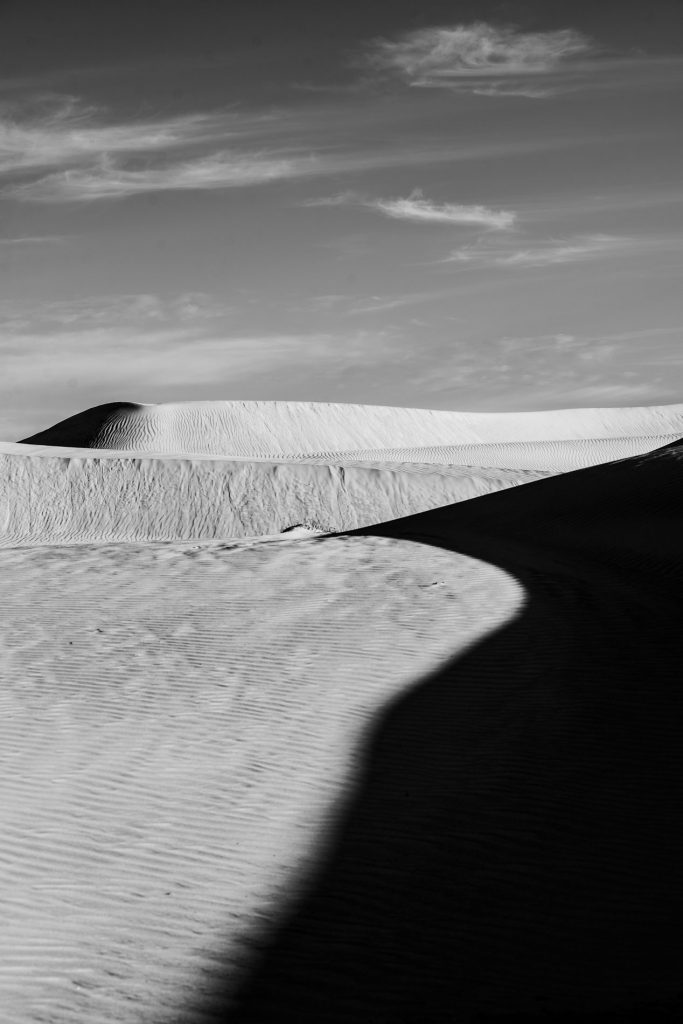Hi Vicky – thanks for agreeing to the chat. I came across your work on Insta and I have no idea of your background, but I was intrigued because I found the work very sophisticated in its aesthetic and hence mysterious. I tend to associate that level of sophistication with practitioners who are working on series or a focused body of work, but yours is more varied and playful; almost like it comes out of a sense of joy and exploration that has a solid aesthetic base, but there’s also a carefree aspect to it.

“Well, actually I ran away to art school to escape from social work in the early 2000s. I’d always dabbled a bit with photography, but not seriously. My mother took a lot of family photos and I got in to it that way. So at art school I had the idea that photography might become my major. In first year of the BA there are all these bits and pieces that you have to do, sculpture, whatever; and I did printmaking and I fell in love with printmaking. But I’d done a bit of photography, experimental photography, and I did use that in my printmaking. But I didn’t finish my degree. I mean, I wasn’t there for the degree, I was there to make a complete change in my life, but it didn’t work out like that because the reality was that I had to go back to work to make money. But I enjoyed the photography aspect of it; the experimental side. Technically I’m not that advanced, I mean I can produce a good image, but for me it’s more about the emotional impact and hopefully the viewer can feel that too. Of course I care about tones, blacks, light, and composition etc. but Ive always been extremely short sighted too, so often things appear differently to my eyes, more about shapes and form, particularly light. That’s why I love abstract.”

That all makes sense because as I said when I came across your work I thought Hang on, it looks like you’re a fine art photographer but you’re not out there being too serious with it, it looks like you’re out to have fun. And this plays into this sense of your experience with other forms. I sometimes think that if all people know is photography they expect it to do things that it’s not really suited to. If you know other techniques and other processes you can say, “Okay, why am I using photography here instead of a print or a drawing or a painting. What is photography bringing to the work that only photography can do?” And that makes for more interesting work.
“I know what you mean – it seems that sometimes people find an effect – be it blur or whatever – and they end up relying on it and overdoing it. For me that sort of thing works better as an accident rather than a plan. Especially in landscape I think, because then you’re part of it, and you’re not really planning it, you’re just with it, you’re engaging with the landscape in a partnership. Like that photo you picked. It’s early mist on the Coorong, and it’s a pretty special place. But I think I’m probably Adelaide’s laziest photographer. I don’t get up especially for the light. I guess maybe I should if I’m going to be serious about it, but I very often have the camera with me, I just have it with me and I might not even take a single shot. But sometimes everything is right, and the light is right and I’ll make a shot.
Alright – let’s talk about landscape, because we both do it, and I have this idea that maybe we can see things in a way that not a lot of people can; we see that beauty and it really affects us, I mean it’s very intense; so intense in fact that you wouldn’t want to see it for too long because it would wipe you out, and we take that intensity and can make something out of it so that other people – normal people…
“…can get it. Yeah, that’s right. We make it so other people can get it. And that fits in with my process too because that is tied to that emotional response – that’s often what it is. I have my favourite landscapes, and they speak to me differently I think, but it doesn’t have to be a place I know. I mean I can go to a new landscape and go “Wow!” and it might be the form, or the shapes, or the light, but it has to speak to me – I love desolation. As an example we were up in Queensland in a rainforest it was stunning but I couldn’t photograph it. I couldn’t take a photo – it was too nice and too green and the photos I was taking were yuck – they were like travel shots. I mean they were nice, and probably most people would think they were great but to me they were nothing. It has to be a landscape that speaks to me. So there’s an honesty there, in the process. It’s a human thing. We react to landscape all the time, wherever we are – it affects our mood, and we’re attracted to certain moods in landscape. I love clouds for example. I mean I love taking photos of clouds; the darker and moodier the better. Maybe it suits my personality – because I’ve discovered I really like the melancholy. And I’m not talking about the depressive, but I love the idea of that sort of sadness. I find that sadness beautiful, and it gets people. There’s not too many people who when that see that beauty and sadness and poignancy don’t respond.
Well that fits into the ideas as the artist as a bit of an antenna, a super-receiver who picks things up and then reconfigures them, puts them out there for others. Not many people say “Hi I’m Vicky and I love clouds,” but I get what you mean.
“And people. I’ve always watched people. As a kid I used to get into trouble for staring at people. I’ve always watched them, checked them out; what they were doing, the way they moved. And then of course I became a social worker.
Okay, again that makes sense because there’s this ability to see, to observe, this finding of the abstract, this finding of the pattern, the enjoyment of the process of seeing and looking. And now you’re out there making work pretty much all the time.
“Well I’m starting. I’m starting to take it a bit more seriously and develop a bit of a profile. I’ve exhibited, but mostly as a printmaker rather than a photographer. I’d come out of social work in 2015 a bit battered and bruised and I was making images of leaves using a scanner. I entered the Adelaide Hills Art Prize and I won it. The only one they’ve had actually. So that gave me a bit of a boost. And I was a finalist last year in the Heysen Prize with my photography. So I’m working a bit more seriously now, getting work together, having one print a month made and maybe putting a series together with a view to exhibition.
And you’re now thinking about projects?
“Oh yes – lots. I keep a visual diary and notebooks. I love reading and researching and I guess I’ve got half a dozen books that I’ve started; clouds is one of those. I see all sorts of beauty and all sorts of weirdness in all sorts of places. I love writing down ideas – and often they don’t come to anything but they’re there. And it’s that act of doing as well. My mother and I used to make lists; lists of things we wanted to do or get and it was just that whole fantasy and dreaminess and that was enough, but I guess maybe it should lead to something because I can’t just stay dreamy all the time.
Well I don’t know about that; dreamy seems pretty good to me. To see more of Vicky’s work check out her Insta @vicky_dennison. Images Copyright Vicky Dennison.
Words Copyright Vicky Dennison and David Hume.